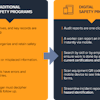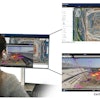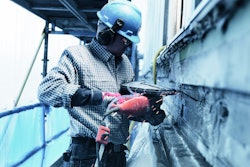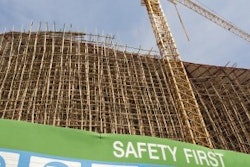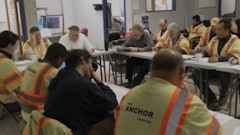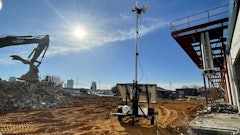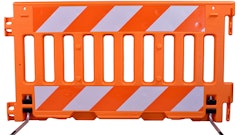Effective July 26, 2012, up to November 8, 2013, the Occupational Safety and Health Administration (OSHA) intends to follow the temporary enforcement policy described below for use of proximity alarms and insulating links with cranes or derricks while engaged in construction activities near power lines. This variation from the 2011 Cranes and Derricks standard because there are no proximity alarms or insulating links/devices that comply with the standard.
The construction Cranes and Derricks standard, 29 CFR 1926 Subpart CC, includes several options for cranes and derricks performing construction activities near power lines. Some of the options involve proximity alarms or insulating links/devices. Effective November 8, 2011, Subpart CC at § 1926.1401 defined "proximity alarm" and "insulating link/device" as devices that warn of proximity to power lines or that insulate against electricity and that have been "...listed, labeled or accepted by a Nationally Recognized Testing Laboratory in accordance with § 29 CFR 1910.7" ("NRTL requirements"). These pieces of safety equipment must meet the performance requirements and the "NRTL requirements" as defined in Subpart CC at § 1926.1401, Definitions, to be used on cranes and derricks in construction.
As of July 26, 2012, no current proximity alarm or insulating link/device meets the Subpart CC "NRTL requirements." Additionally, at this time, no Nationally Recognized Testing Laboratory is recognized by the Agency to perform the required testing to list, label or accept either type device. Proximity alarms and insulating links/devices, which do not meet the Subpart CC "NRTL requirements," continue to be available, as they have for decades. These versions have not been "...listed, labeled or accepted by a Nationally Recognized Testing Laboratory in accordance with § 29 CFR 1910.7".
Because there are no compliant proximity alarms or insulating links/devices, OSHA intends to follow the temporary policy noted below until November 8, 2013, to give the industry additional time to meet the "NRTL requirements." The temporary policy is for proximity alarm use under §1926.1407 Power line safety (up to 350 kV)--assembly and disassembly, for use under §1926.1408 Power line safety (up to 350 kV)--equipment operations, for use under §1926.1409 Power line safety (over 350 kV) through §§ .1407 and .1408 over 350 kV, and for insulating link/device use under §1926.1410 Power line safety (all voltages)--equipment operations closer than the Table A zone.
Proximity Alarms
At this time, because no current proximity alarms meet the "NRTL requirements" as stated in the § 1926.1401 definition for "proximity alarm," employers may not rely on any proximity alarm to comply with the requirements in 29 CFR 1926 Subpart CC. However, if a Compliance Safety and Health Officer (CSHO) encounters a crane/derrick in construction using a proximity alarm in conjunction with a properly implemented additional "measure" such as using a "dedicated spotter" or "range control warning device" from §§ 1926.1407(b)(3) or .1408(b)(4), then no citation is to be issued for violation of either §§ 1926.1407(b)(3)(ii) or .1408(b)(4)(i), including situations where voltages are over 350 kV as referenced in § 1926.1409.
Insulating Links/Devices
At this time, because no current insulating links/devices meet the "NRTL requirements" in the § 1926.1401 definition for "insulating link/device" and because § 1926.1410(d)(4)(v)(A) prohibits using insulating links/devices manufactured after November 8, 2011, employers may not rely on any insulating link/device to comply with requirements in 29 CFR 1926 Subpart CC. However, if a CSHO encounters a crane/derrick in construction using an insulating link/device in conjunction with workers properly protected by implementation of the requirements in § 1926.1410(d)(4)(v)(A) and (B), no citation is to be issued for violation of the §1926.1410(d)(4)(v)(A) requirement that the insulating "... link/device be manufactured on or before November 8, 2011..."
If OSHA staff encounter proximity alarms or insulating links/devices of unknown or questionable status or markings, contact the NRTL Program Office within the Directorate of Technical Support and Emergency Management at telephone 202-693-2300 for clarification whether or not the device is a "proximity alarm" or an "insulating link/device" within 1926.1401 definitions and "NRTL requirements."
